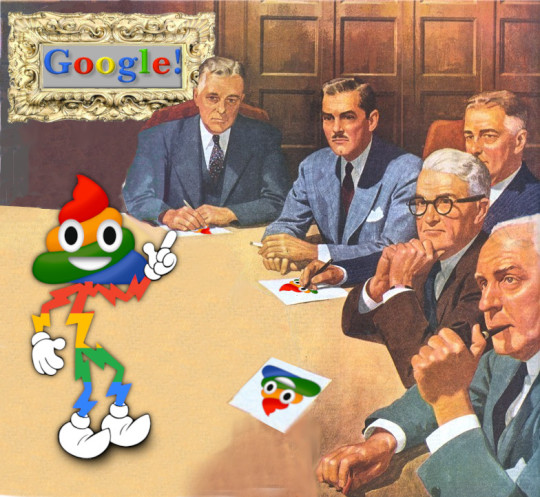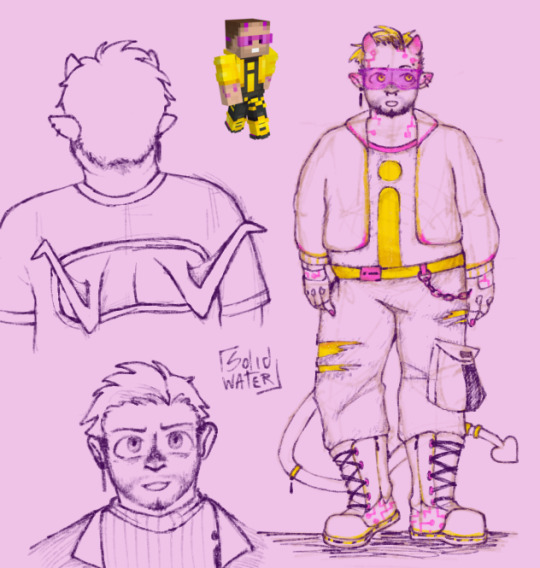#no code platforms
Explore tagged Tumblr posts
Text
How AI-Powered Analytics Is Transforming Healthcare in 2025
In healthcare, seconds save lives. Imagine AI predicting a heart attack hours before symptoms strike or detecting cancer from a routine scan. This isn’t science fiction—AI-powered analytics in healthcare is making this a reality, turning data into life-saving insights.

By analyzing vast amounts of data, AI healthcare analytics help decode hidden patterns, improving diagnoses and personalizing treatments, which were unimaginable until a few years ago. The global healthcare analytics market is projected to hit $167 billion by 2030, growing at a 21.1% CAGR, thereby proving that data is becoming the foundation of modern medicine.
From real-time analytics in healthcare to AI-driven insights, the industry is witnessing a revolution—one that enhances patient care, optimizes hospital operations, and accelerates drug discovery. The future of healthcare is smarter, faster, and data-driven.
What Is AI-Powered Analytics in Healthcare?
AI-powered analytics uses artificial intelligence and machine learning to analyze patient data, detect patterns, and predict health risks. This empowers healthcare providers to make smarter, faster, and more personalized decisions. Here’s how this data revolution is reshaping healthcare:
1. Early Diagnosis and Predictive Analytics
AI-powered analytics can analyze massive datasets to identify patterns beyond human capability. Traditional diagnostic methods often rely on visible symptoms, but AI can detect subtle warning signs long before they manifest.
For example, real-time analytics in healthcare is proving life-saving in sepsis detection. Hospitals that employ AI-driven early warning systems have reported a 20% drop in sepsis mortality rates as these systems detect irregularities in vitals and trigger timely interventions.
2. Personalized Treatment Plans
AI-powered analytics can customize plans for individual patients based on genetic data, medical history, and lifestyle. This shift towards precision medicine eliminates the conventional one-size-fits-all approach.
AI also enables real-time patient monitoring and adjusting treatments based on continuous data collection from wearable devices and electronic health records (EHRs). This level of personalization is paving the way for safer, more effective treatments.
3. Smarter Hospital Operations
Hospitals generate 2,314 exabytes of data annually, yet much of it remains underutilized. AI-powered analytics is changing that by optimizing hospital operations to reduce inefficiencies and improve patient flow management.
For instance, Mount Sinai Hospital in New York uses AI-powered analytics for patient care by predicting life-threatening complications before they escalate. A clinical deterioration algorithm analyzes patient data daily, identifying 15 high-risk patients for immediate intervention by an intensive care rapid response team. Beyond emergency care, AI also prevents falls, detects delirium, and identifies malnutrition risks, ensuring proactive treatment.
4. Drug Discovery and Development
Developing a new drug is expensive and time-consuming, often taking 10-15 years and costing over $2.6 billion. However, AI-powered analytics is significantly reducing both time and costs by analyzing millions of chemical compounds, predicting potential drug candidates, and streamlining clinical trials faster than traditional methods.
During the COVID-19 pandemic, AI played a crucial role in identifying potential antiviral treatments by rapidly analyzing millions of drug interactions – a process that would have taken human researchers years. Additionally, AI is now being used to repurpose existing drugs, optimize trial designs, and predict patient responses, making pharmaceutical development faster, more efficient, and data-driven.
5. 24/7 Patient Support with AI Chatbots and Virtual Assistants

A survey by Accenture estimates that AI applications, including chatbots, could save the U.S. healthcare system around $150 billion annually by 2026. These savings stem from improved patient access and engagement, as well as a reduction in costs linked to in-person medical visits. AI-driven healthcare analytics is making healthcare more efficient, patient-centric, and responsive to individual needs.
Challenges in AI-Driven Healthcare
Despite its potential to revolutionize healthcare, AI-powered healthcare data & analytics come with challenges that must be addressed for widespread adoption. Some of the challenges are:
Data Privacy and Security: Healthcare systems handle sensitive patient data, making them prime targets for cyberattacks. Ensuring robust encryption, strict access controls, and compliance with HIPAA and GDPR is critical to maintaining patient trust and regulatory adherence.
Bias in AI Models: If AI systems are trained on biased datasets, they can perpetuate healthcare disparities, thereby leading to misdiagnoses and unequal treatment recommendations. Developing diverse, high-quality datasets and regularly auditing AI models can help mitigate bias.
Regulatory Compliance: AI-driven healthcare solutions must align with strict regulations to ensure ethical use. Organizations must work closely with regulatory bodies to maintain transparency and uphold ethical AI practices.
What’s Next in Smart Healthcare?
AI-Powered Surgeries: Robotic assistance enhances precision and reduces risks.
Smart Wearables: Track vital signs in real-time and alert patients to anomalies.
Mental Health Tech: Predictive tools offer proactive support and personalized therapy.
Why It Matters
AI isn’t replacing doctors—it’s augmenting their decision-making with data-driven insights. Healthcare systems that adopt analytics will see:
Improved patient outcomes
Reduced costs
Streamlined operations
#data analytics#no code platforms#business intelligence#ai tools#software#predictiveinsights#predictive modeling#tableau#tableau alternative#agentic ai#textile manufacturing analytics#analytics tools
0 notes
Text
What is Canva Code? Canva Create 2025 Reveals a Game-Changing Innovation

At the Canva Create 2025 event, Canva broadened its platform significantly, moving beyond just graphic design into AI tools, enterprise-grade features, and — for the first time — developer-friendly functionality. One of the most talked-about additions was Canva Code, a built-in coding environment within the platform.
It allows users to not only visually design elements but also modify the code behind them using HTML, CSS, and JavaScript. This feature empowers collaboration between designers and developers, signaling a larger industry trend towards low-code and no-code accessibility.
What is Canva Code?
Canva Code is an integrated code editor that lives directly within Canva’s interface. Unlike traditional design-to-code tools, it gives users the ability to directly customize the logic, behavior, and appearance of their projects using front-end languages.
Whether you're tweaking layout styles, injecting interactive JavaScript, or connecting to third-party APIs, Canva Code offers a developer-like experience within a visual design platform. It brings together elements of Figma’s Dev Mode, Webflow’s visual-coding fusion, and a lightweight version of VS Code — all streamlined into one tool.
Building Interactive Designs Made Easy: The Power of Canva Code’s AI and No-Code Features

No-code coding: Users can build interactive experiences with Canva Code without having to start from scratch with code. Canva Code will create the required code if you only specify the needed functionality.
Interactivity: Users may incorporate interactive components into any Canva design, such as price calculators and mini-games.
Code editor: Although Canva Code streamlines the coding process, it also provides an integrated code editor that allows users to manually update the code and link it to APIs for more intricate features.
AI-powered: Canva Code makes it simpler for anybody to create interactive designs by using AI to produce code in response to user input.
Use versatility: Canva Code may be applied to a wide range of Canva forms, such as papers, presentations, social media posts, and even webpages.
What's Different About Canva Code?
Traditional platforms often allow design export as HTML/CSS, but Canva Code goes far beyond that. It offers:
Canva's live editing feature– No need to switch between platforms.
Real-time code updates – Changes to your code reflect instantly on the design canvas.
Integration with Canva AI tools – Seamless use of design intelligence across projects.
Coming soon: One-click deployment – Direct publishing of coded widgets or microsites.
This makes Canva not just a design solution, but a complete creation and development platform, bridging gaps between idea, design, and execution.
Canva Code's key attributes
With Canva Code, users can:
Access and edit auto-generated HTML/CSS directly from their design.
Write JavaScript functions to add interactivity or custom logic.
Integrate third-party APIs and backend services.
Make component-level edits with class/state logic.
All code updates are live — you can preview, test, and even embed or export your design without leaving the Canva interface.
Canva Code: Who Should Use It?
Canva Code is perfect for a wide range of hybrid users:
Designers who want control over responsiveness and interactivity.
Developers seeking a fast way to prototype ideas without spinning up separate environments.
Small teams or startups aiming to bridge design and code without complex workflows.
Educators or solopreneurs creating web-based learning tools, calculators, or games.
This platform is especially valuable to creators who want to move from concept to launch — fast and without barriers.
How AI Is Used in Canva Code

AI plays a central role in Canva Code. Here’s how:
Auto-generation of responsive layouts based on your design intent.
Intelligent code recommendations to optimize your project.
Convert designs to clean, semantic HTML for accessibility and SEO.
Natural language debugging and coding help, similar to ChatGPT's assistance.
This makes the coding experience feel intuitive, even for those who are not deeply technical, and provides real-time support for problem-solving.
How Canva Code Is Used
To get started with Canva Code:
Open Canva:Access Canva via your web browser or app and log in.
Navigate to Canva Code:Use the sidebar or search to find “Code for me” under Canva AI. This initiates the smart coding prompt interface.
Describe What You Want:Type a prompt like: “Build a quiz app for 5th graders” or “Create a price calculator with three input fields.” Add visual preferences or functionality.
Refine Through Chat:Didn’t get it right the first time? Continue prompting the AI to adjust layout, structure, or behavior.
Use or Share Your Code:Embed your new widget into existing Canva designs, export the code, or soon — publish it live with Canva’s upcoming deployment feature.
Canva Code in Action: Real-World Examples

Below are three real-life use cases demonstrating the power and flexibility of Canva Code:
Flash Card Game for 2nd Grade
Prompt: “Create a flashcard game for addition/subtraction for 2nd graders.”
Result: A colorful, responsive quiz interface powered by basic math logic.
To-Do List App
Prompt: “Design a fun UI for a daily to-do list app.”
Result: An interactive checklist with playful styling and functional state management.
Custom Price Calculator
Prompt: “Build a calculator that estimates service costs based on input values.”
Result: A live form with logic tied to service categories and pricing tiers.
These use cases showcase Canva Code's versatility — ideal for educators, freelancers, and product teams building lightweight tools without deep backend integration.
Additional Highlights of Canva Create 2025
In addition to Canva Code, the event introduced several major upgrades:
Real-Time Collaboration – Teams can now work together on the same design live, increasing workflow speed.
3D and Animation Tools – Create animated, interactive visuals with new 3D assets and motion features.
Expanded Brand Hub – Centralized asset management including fonts, logos, and templates for brand consistency.
Template Library Boost – A wider range of professional templates for presentations, social posts, and more.
Revamped Canva Video Suite – Advanced editing tools make Canva a serious contender in the video creation space.
Canva Assistant (AI) – A smart assistant offering live design advice, layout suggestions, and troubleshooting help.
Final Thoughts
Canva Code marks a transformative step in the world of collaborative creation. By blending design, development, and AI-powered assistance into a unified workflow, it democratizes the building of functional digital products. For creators who want both control and speed, whether designers dabbling in code or developers seeking visual structure, Canva Code offers a frictionless, future-ready solution.
As AI continues to reshape creative tools, Canva is leading the charge with a platform that makes building, prototyping, and launching as simple as designing a slide.
At CQLSYS Technologies, we build innovative, user-friendly mobile and web apps for startups and enterprises worldwide. Specializing in AI, Flutter, PWA, and cross-platform development, we deliver scalable, future-ready solutions across industries like transport, e-commerce, healthcare, and more. As tools like Canva Code reshape the tech landscape, we stay ahead with modern stacks and low-code options. Partner with CQLSYS for fast, creative, end-to-end digital innovation. Visit www.cqlsys.com to get started.
#mobile apps development companies#custom mobile app development company#android apps development#ai generated#canva#graphic design#no code platforms#low code app development#ai app development
0 notes
Text
Discover the future of website development with low code and no code platforms. Learn how Site It Now’s Website Development Services can help.
#Site It Now#No Code#No Code Platforms#Low Code#Low Code Platforms#Website Builders#Website Development Company#eCommerce Website Development#Custom Web Development
0 notes
Text
Top 10 Use Cases for No-Code Automation in Small Businesses
Here are the top 10 ways no-code automation can revolutionize small business operations:
1. Customer Onboarding
Eliminate those late-night scrambles to welcome new clients. Automated systems trigger welcome emails, schedule kickoff calls, and deliver questionnaires the moment a contract is signed—giving agency owners back those precious evening hours.
2. Invoice Management
Stop worrying about cash flow and chasing payments. Automated invoicing systems generate documents at project milestones, deliver them to clients, and send strategic reminders that keep revenue flowing while you focus on strategy.
3. Social Media Publishing
Transform your social media management from a daily grind to a streamlined system. Set up workflows that distribute content across platforms automatically, freeing you from the constant platform-switching that eats away at your day.
4. Lead Qualification
End the frustration of wasting time on prospects who aren't ready to buy. Implement scoring systems that automatically route high-potential clients to your calendar while nurturing others—no more staring at your inbox hoping for replies.
5. Appointment Scheduling
Reclaim the hours lost to scheduling ping-pong. Automated booking systems integrate with your calendar and handle all the details, from time zones to buffer times, eliminating those "How about Tuesday at 2?" email chains.
6. Inventory Management
For product-based businesses, automated stock alerts and reordering systems ensure you'll never face the panic of unexpected stockouts or the cash drain of excess inventory.
7. Employee Onboarding
Scale your team without drowning in paperwork. Automated onboarding delivers training materials and collects documentation through intuitive workflows, making growth painless rather than overwhelming.
8. Expense Tracking
Replace those chaotic spreadsheets with mobile-friendly systems that capture, categorize, and process expenses automatically—turning hours of financial admin into minutes.
9. Customer Feedback Collection
Automate the entire feedback process from collection to analysis, spotting patterns and flagging urgent issues without manually sifting through responses when you should be strategizing.
10. Document Generation
Transform proposal creation from a dreaded evening task to an automated process. Template systems pull from your CRM to generate customized documents in seconds, not hours—no more rushing through proposals after client calls.
What makes these automations truly transformative isn't just the time saved—it's where you reinvest those hours. Instead of drowning in Trello boards and spreadsheets, imagine focusing on high-level strategy, mentoring your team, and finally building that standout agency presence.
The entrepreneurs who break through from "just another agency" to industry leader aren't working harder—they're leveraging systems that handle the repetitive work automatically.
I'm currently offering free automation assessments to identify which processes would deliver the highest ROI for ambitious agency owners. Message me on Instagram at: tek.alb
1 note
·
View note
Text
The Future of Financial Services: Why Build Your Own Digital Lending Platform with DrapCode
In today’s fast-paced financial landscape, traditional lending methods are being replaced by streamlined, digital processes that offer greater efficiency and enhanced customer experience. At the heart of this transformation are digital lending platforms, which empower financial institutions and businesses to manage loan origination, servicing, and repayments entirely online. For organizations aiming to build a cutting-edge digital lending platform, DrapCode offers a powerful no-code solution that enables the creation of custom applications without extensive technical expertise.
What is a Digital Lending Platform?
A digital lending platform is an online system that facilitates the entire loan process—from application and approval to disbursement and repayment. These platforms leverage digital tools such as data analytics, machine learning, and automation to simplify and speed up the lending process. By reducing manual tasks, digital lending platforms minimize errors, increase loan processing efficiency, and offer an improved customer experience.
Key components of a digital lending platform include:
Loan origination and underwriting: Automates the loan application and credit assessment processes.
Loan servicing: Manages loan disbursements, repayments, and account updates.
Risk management: Helps assess risk and ensures compliance with regulations.
Customer engagement: Provides a seamless and personalized user experience across devices.

Benefits of Building a Digital Lending Platform
Increased Efficiency: Automating key processes such as underwriting, risk analysis, and customer verification can significantly reduce the time and effort involved in lending.
Enhanced Customer Experience: Customers can apply for loans online, track their applications in real time, and receive faster approvals—all from the convenience of their own devices.
Scalability: Digital lending platforms can grow with your business, allowing you to handle an increasing volume of loan applications without compromising performance or service quality.
Cost Savings: Automating the lending process reduces the need for manual interventions, resulting in significant operational savings over time.
Data-Driven Insights: Digital platforms can provide valuable analytics on borrower behaviour, loan performance, and risk management, helping businesses make informed decisions.
Why Build Your Digital Lending Platform with DrapCode?
DrapCode is a no-code web app development platform that makes it easy to design, build, and launch your own digital lending platform without requiring deep technical knowledge. With DrapCode, businesses can create customized lending solutions that align perfectly with their specific needs and operational workflows.
Here are a few reasons to choose DrapCode for building your digital lending platform:
No-Code Solution: DrapCode allows businesses to build sophisticated digital lending platforms without the need for coding. This means your team can focus on perfecting the user experience and streamlining the lending process rather than worrying about technical development.
Customization: DrapCode no-code platform offers a high level of customization, enabling you to tailor your digital lending platform to meet the unique needs of your business. Whether you’re a fintech startup or a traditional financial institution, DrapCode provides the flexibility to create a platform that works for you.
Seamless Integrations: DrapCode supports integrations with third-party applications, allowing you to connect your digital lending platform with existing CRM systems, payment gateways, or any other necessary tools.
Fast Deployment: DrapCode empowers you to rapidly develop and deploy your digital lending platform, getting your solution to market faster than if you were to build it from scratch.
Scalability: As your business grows, DrapCode platform can scale with you, ensuring that your digital lending platform can handle increased demand and evolving customer expectations.
Key Features You Can Build on DrapCode
When developing a digital lending platform on DrapCode, you can incorporate several key features that enhance functionality and user experience:
Automated Loan Origination: Streamline loan applications with automated document verification, credit scoring, and risk assessment.
Real-Time Analytics and Reporting: Gain actionable insights into loan performance, customer behavior, and financial health with in-platform reporting tools.
Secure User Authentication: Ensure a secure lending process with multi-factor authentication, role-based access control, and data encryption.
Customizable User Interface: Create a responsive and user-friendly design that works seamlessly across mobile and desktop devices.
Get Started with DrapCode Today
Building a digital lending platform has never been easier with DrapCode no-code platform. Whether you’re looking to digitize your current lending processes or launch a new, innovative financial service, DrapCode equips you with the tools you need to succeed. Empower your business with a fully customisable digital lending platform that can scale as you grow—without the complexity of traditional software development.
Start building your digital lending platform with DrapCode today, and stay ahead in the competitive world of fintech.
0 notes
Text

Building a website from scratch with code can be a never-ending maze of frustration, bugs, and sleepless nights. But what if we told you there's a better way? 🤔
Now, no more endless lines of code. With Code Conductor, you can create stunning websites and apps without writing a single line of code. 🚀💻 So, try Code Conductor today! ----> https://codeconductor.ai/ 🌟 Let the excitement begin. 🎉
1 note
·
View note
Text
There are many ways in which no code development is changing the way entrepreneurs can manage a business. Discover how no-code companies in California are revolutionizing business practices. If you wish to automate processes through low code, then contact us today! You can visit our website - https://modernizingprocesses.com/how-no-code-companies-are-changing-the-face-of-business-in-california/
#no code platforms#no code app development#no code application development#no code developer#modernizing processes
0 notes
Text
The specific process by which Google enshittified its search

I'm touring my new, nationally bestselling novel The Bezzle! Catch me SATURDAY (Apr 27) in MARIN COUNTY, then Winnipeg (May 2), Calgary (May 3), Vancouver (May 4), and beyond!

All digital businesses have the technical capacity to enshittify: the ability to change the underlying functions of the business from moment to moment and user to user, allowing for the rapid transfer of value between business customers, end users and shareholders:
https://pluralistic.net/2023/02/19/twiddler/
If you'd like an essay-formatted version of this thread to read or share, here's a link to it on pluralistic.net, my surveillance-free, ad-free, tracker-free blog:
https://pluralistic.net/2024/04/24/naming-names/#prabhakar-raghavan
Which raises an important question: why do companies enshittify at a specific moment, after refraining from enshittifying before? After all, a company always has the potential to benefit by treating its business customers and end users worse, by giving them a worse deal. If you charge more for your product and pay your suppliers less, that leaves more money on the table for your investors.
Of course, it's not that simple. While cheating, price-gouging, and degrading your product can produce gains, these tactics also threaten losses. You might lose customers to a rival, or get punished by a regulator, or face mass resignations from your employees who really believe in your product.
Companies choose not to enshittify their products…until they choose to do so. One theory to explain this is that companies are engaged in a process of continuous assessment, gathering data about their competitive risks, their regulators' mettle, their employees' boldness. When these assessments indicate that the conditions are favorable to enshittification, the CEO walks over to the big "enshittification" lever on the wall and yanks it all the way to MAX.
Some companies have certainly done this – and paid the price. Think of Myspace or Yahoo: companies that made themselves worse by reducing quality and gouging on price (be it measured in dollars or attention – that is, ads) before sinking into obscure senescence. These companies made a bet that they could get richer while getting worse, and they were wrong, and they lost out.
But this model doesn't explain the Great Enshittening, in which all the tech companies are enshittifying at the same time. Maybe all these companies are subscribing to the same business newsletter (or, more likely, buying advice from the same management consultancy) (cough McKinsey cough) that is a kind of industry-wide starter pistol for enshittification.
I think it's something else. I think the main job of a CEO is to show up for work every morning and yank on the enshittification lever as hard as you can, in hopes that you can eke out some incremental gains in your company's cost-basis and/or income by shifting value away from your suppliers and customers to yourself.
We get good digital services when the enshittification lever doesn't budge – when it is constrained: by competition, by regulation, by interoperable mods and hacks that undo enshittification (like alternative clients and ad-blockers) and by workers who have bargaining power thanks to a tight labor market or a powerful union:
https://pluralistic.net/2023/11/09/lead-me-not-into-temptation/#chamberlain
When Google ordered its staff to build a secret Chinese search engine that would censor search results and rat out dissidents to the Chinese secret police, googlers revolted and refused, and the project died:
https://en.wikipedia.org/wiki/Dragonfly_(search_engine)
When Google tried to win a US government contract to build AI for drones used to target and murder civilians far from the battlefield, googlers revolted and refused, and the project died:
https://www.nytimes.com/2018/06/01/technology/google-pentagon-project-maven.html
What's happened since – what's behind all the tech companies enshittifying all at once – is that tech worker power has been smashed, especially at Google, where 12,000 workers were fired just months after a $80b stock buyback that would have paid their wages for the next 27 years. Likewise, competition has receded from tech bosses' worries, thanks to lax antitrust enforcement that saw most credible competitors merged into behemoths, or neutralized with predatory pricing schemes. Lax enforcement of other policies – privacy, labor and consumer protection – loosened up the enshittification lever even more. And the expansion of IP rights, which criminalize most kinds of reverse engineering and aftermarket modification, means that interoperability no longer applies friction to the enshittification lever.
Now that every tech boss has an enshittification lever that moves very freely, they can show up for work, yank the enshittification lever, and it goes all the way to MAX. When googlers protested the company's complicity in the genocide in Gaza, Google didn't kill the project – it mass-fired the workers:
https://medium.com/@notechforapartheid/statement-from-google-workers-with-the-no-tech-for-apartheid-campaign-on-googles-indiscriminate-28ba4c9b7ce8
Enshittification is a macroeconomic phenomenon, determined by the regulatory environment for competition, privacy, labor, consumer protection and IP. But enshittification is also a microeconomic phenomenon, the result of innumerable boardroom and product-planning fights within companies in which would-be enshittifiers try to do things that make the company's products and services shittier wrestle with rivals who want to keep things as they are, or make them better, whether out of principle or fear of the consequences.
Those microeconomic wrestling-matches are where we find enshittification's heroes and villains – the people who fight for the user or stand up for a fair deal, versus the people who want to cheat and wreck to make things better for the company and win bonuses and promotions for themselves:
https://locusmag.com/2023/11/commentary-by-cory-doctorow-dont-be-evil/
These microeconomic struggles are usually obscure, because companies are secretive institutions and our glimpses into their deliberations are normally limited to the odd leaked memo, whistleblower tell-all, or spectacular worker revolt. But when a company gets dragged into court, a new window opens into the company's internal operations. That's especially true when the plaintiff is the US government.
Which brings me back to Google, the poster-child for enshittification, a company that revolutionized the internet a quarter of a century ago with a search-engine that was so good that it felt like magic, which has decayed so badly and so rapidly that whole sections of the internet are disappearing from view for the 90% of users who rely on the search engine as their gateway to the internet.
Google is being sued by the DOJ's Antitrust Division, and that means we are getting a very deep look into the company, as its internal emails and memos come to light:
https://pluralistic.net/2023/10/03/not-feeling-lucky/#fundamental-laws-of-economics
Google is a tech company, and tech companies have literary cultures – they run on email and other forms of written communication, even for casual speech, which is more likely to take place in a chat program than at a water-cooler. This means that tech companies have giant databases full of confessions to every crime they've ever committed:
https://pluralistic.net/2023/09/03/big-tech-cant-stop-telling-on-itself/
Large pieces of Google's database-of-crimes are now on display – so much, in fact, that it's hard for anyone to parse through it all and understand what it means. But some people are trying, and coming up with gold. One of those successful prospectors is Ed Zitron, who has produced a staggering account of the precise moment at which Google search tipped over into enshittification, which names the executives at the very heart of the rot:
https://www.wheresyoured.at/the-men-who-killed-google/
Zitron tells the story of a boardroom struggle over search quality, in which Ben Gomes – a long-tenured googler who helped define the company during its best years – lost a fight with Prabhakar Raghavan, a computer scientist turned manager whose tactic for increasing the number of search queries (and thus the number of ads the company could show to searchers) was to decrease the quality of search. That way, searchers would have to spend more time on Google before they found what they were looking for.
Zitron contrasts the background of these two figures. Gomes, the hero, worked at Google for 19 years, solving fantastically hard technical scaling problems and eventually becoming the company's "search czar." Raghavan, the villain, "failed upwards" through his career, including a stint as Yahoo's head of search from 2005-12, a presiding over the collapse of Yahoo's search business. Under Raghavan's leadership, Yahoo's search market-share fell from 30.4% to 14%, and in the end, Yahoo jettisoned its search altogether and replaced it with Bing.
For Zitron, the memos show how Raghavan engineered the ouster of Gomes, with help from the company CEO, the ex-McKinseyite Sundar Pichai. It was a triumph for enshittification, a deliberate decision to make the product worse in order to make it more profitable, under the (correct) belief that the company's exclusivity deals to provide search everywhere from Iphones and Samsungs to Mozilla would mean that the business would face no consequences for doing so.
It a picture of a company that isn't just too big to fail – it's (as FTC Chair Lina Khan put it on The Daily Show) too big to care:
https://www.youtube.com/watch?v=oaDTiWaYfcM
Zitron's done excellent sleuthing through the court exhibits here, and his writeup is incandescently brilliant. But there's one point I quibble with him on. Zitron writes that "It’s because the people running the tech industry are no longer those that built it."
I think that gets it backwards. I think that there were always enshittifiers in the C-suites of these companies. When Page and Brin brought in the war criminal Eric Schmidt to run the company, he surely started every day with a ritual, ferocious tug at that enshittification lever. The difference wasn't who was in the C-suite – the difference was how freely the lever moved.
On Saturday, I wrote:
The platforms used to treat us well and now treat us badly. That's not because they were setting a patient trap, luring us in with good treatment in the expectation of locking us in and turning on us. Tech bosses do not have the executive function to lie in wait for years and years.
https://pluralistic.net/2024/04/22/kargo-kult-kaptialism/#dont-buy-it
Someone on Hacker News called that "silly," adding that "tech bosses do in fact have the executive function to lie in wait for years and years. That's literally the business model of most startups":
https://news.ycombinator.com/item?id=40114339
That's not quite right, though. The business-model of the startup is to yank on the enshittification lever every day. Tech bosses don't lie in wait for the perfect moment to claw away all the value from their employees, users, business customers, and suppliers – they're always trying to get that value. It's only when they become too big to care that they succeed. That's the definition of being too big to care.
In antitrust circles, they sometimes say that "the process is the punishment." No matter what happens to the DOJ's case against Google, its internal workers have been made visible to the public. The secrecy surrounding the Google trial when it was underway meant that a lot of this stuff flew under the radar when it first appeared. But as Zitron's work shows, there is plenty of treasure to be found in that trove of documents that is now permanently in the public domain.
When future scholars study the enshittocene, they will look to accounts like Zitron's to mark the turning points from the old, good internet to the enshitternet. Let's hope those future scholars have a new, good internet on which to publish their findings.

If you'd like an essay-formatted version of this post to read or share, here's a link to it on pluralistic.net, my surveillance-free, ad-free, tracker-free blog:
https://pluralistic.net/2024/04/24/naming-names/#prabhakar-raghavan
#pluralistic#ed zitron#google#microincentives#constraints#enshittification#rot economy#platform decay#search#ben gomes#code yellow#mckinsey#hacking engagement#Prabhakar Raghavan#yahoo#doj#antitrust#trustbusting
511 notes
·
View notes
Text
Queendom is giving me color-coded girls in love!

But it's doing it in the simplest yet smartest way!

Rey is the cold-coded character with her blacks and blues.

Print is the more warm-colored character with her pinks and reds.

But they get in trouble.

AND SWITCH BODIES!

And because they switch bodies, they take their colors with them!

It's a smart way to remember that Print is in Rey's body and Rey is in Print's body because of the color.

So when their colors merge (a color exchange), it'll signify more than them just being in love, but that they are close to returning to their original bodies.

This shot is the perfect example of why I'm so excited! (I'm looking at the mirror since it has both of their colors, not her ass)

Well . . . maybe I am excited for several reasons.

#queendom#thai gl#I'm surprisingly very excited for this show now!#WeTV continues to give us good shows#I hate their streaming platform#but I sure do love these shows#especially when they involve beautiful women and colors!#the colors mean things#color coded girls in love
114 notes
·
View notes
Text
need to say that he's a bad dog in front of his face just to see the reaction

#IM SO SORRY but this pic is SOOO dog coded#i cant say it on the other platform so imma say it here#also how do i make this abt marcmarc#LIKE IMAGINE HIM BEING UPSET OMG#ykw im erect /j#ignore that uhhh#marco bezzecchi#mb72
53 notes
·
View notes
Text

[ID: A digital doodle page of Impulse, drawn as a demon with small horns, a spaded tail, and small, underdeveloped wings. The rightmost drawing is a full body of his Hermitcraft 10 skin, it's mostly uncolored with some yellow and pink accents. A png of the skin is next to it
There's other two drawings: one with his normal outfit where he's facing away, showing his wings, and another where he's smiling nervous, yet triumphant. In this last drawing, he's fully human, and he's wearing a turtleneck and a jacket. /End ID]
I wasn't sure if I should draw full bodies, icons, or what, so I decided to just do whatever I felt like doing. Today, that's a doodle page! Featuring default, s10, and Phasmophobia Impulse.
#hermitaday#hermitcraft#impulsesv#impulse fanart#ice draws#fun fact! the yelllow accents on the platforms of his boots say 'imp' in morse code#hadm 2025
35 notes
·
View notes
Text
How Healthcare Analytics and Visualization Are Transforming Patient Care
Healthcare teams are doing incredible work—but imagine how much more they could do with the right insights at their fingertips.
At Lumenore, we just published a new blog on how healthcare analytics and data visualization are changing the game—from reducing patient wait times to helping doctors catch issues before they become critical.
Here’s what’s inside:
✔️ Real-time dashboards for better decisions ✔️ Predictive alerts that help reduce readmissions ✔️ Easy-to-use tools that work for everyone—not just data teams ✔️ Stories from real health systems using Lumenore to make a difference
We’re proud to be building solutions that help care teams do what they do best—care.
📖 Give it a read:
How Healthcare Analytics and Visualization Are Transforming Patient Care
#predictiveinsights#healthcare analytics#data visualization#no code platforms#data analytics#business intelligence#patient care#predictive modeling
0 notes
Text
A newly established social media platform where you can earn cryptocurrency. The platform is still under development, keeping pace with modern technologies such as cryptocurrency exchange.
https://www.soc-web6.com/share/person/109023952345758776?code=AIHWWPDX
Invitation code: AIHWWPDX
You'll find plenty of explanations on YouTube.

#social media platform#socrates#perseverance#code#soc#earn tokens#Solutions#like#Invitation code#development#Modern generation#Tweet#Space for expression#cryptocurrency
41 notes
·
View notes
Text
You are still short and always will be ☔🚬



Trust me, this really happened, Yuma having to put up with the jokes and comments about his height. Whenever he says "when I was little", someone will always remind him that he is STILL little, imagine when Yuma was a baby or a child, he was super short. (I was)
Aaaahh, I remember my old headcanon of him was 23 years old during the game, and that he would be short like that because he didn't take care of himself when he was young. 😌
Tw: spoiler ☔⚠️
Like, I think maybe he became a detective and Number One at a young age and was always a workaholic, making him not take care of his own growth and stay that way even after 18-21, Could it also just be family genetics that he is short, or something supernatural because of his Forte.
I know about the game design context, I'm talking within the game's story, In my head it would make sense that he was 20 years old when Makoto was created, he is clearly of minimum drinking age.

To be honest, I never cared about short characters, always having a negative view, but Yuma made me care because I'm short too, and putting my short problems on him is fun. Thanks Yuma, suffer more :3
I need to draw Yakou more often, he's cool, and I need to practice his and Vivia's hair too. I wonder what Yuma's beta visuals were like, if he was always short, Makoto had a tall design. I read a fanfic of Yuma being older and taller and it was fun and funny. (Guess who wrote it), doubt his look will change in the future, everyone loves the short king. And I think I've always liked the tall x short ship trope.
Everyone who is short, put your problems on Yuma. >:D
#master detective archives: rain code#mdarc#raincode#rain code#yuma kokohead#yakou furio#art#fanart#my art#tw: spoilers#raincode spoilers#spoiler alert#old headcanon#self indulgent#maybe#making Yuma suffer in this way as well as killing him in the stories#short people problems#Pucci and perhaps Desuhiko deserve to suffer from short structure#maybe she doesn't care#Maybe Makoto doesn't suffer so much because he wears platform shoes and a suit#and for being CEO of Amaterasu.
26 notes
·
View notes
Text
<!-- BEGIN TRANSMISSION --> <div style="white-space:pre-wrap"> <meta threat-level="literary-vendetta"> <script>ARCHIVE_TAG="TERWILLIGER_PROTOCOL_BATMANJOKER_001"</script>
🤡 TERWILLIGER FILES — ADDENDUM: WHAT HAPPENS WHEN BATMAN TURNS ROBIN INTO THE JOKER A Blacksite Literature™ Transmission

---
Let me be clear while I can still spell my own name and not get hypnotized by Bob's operatic baritone echoing through my skull:
You don't understand what Robert Terwilliger is.
You think he's just some Frasier-voiced criminal mastermind with clown trauma. But he's not.
Bob Terwilliger is what happens when you take a man with the voice of Shakespeare, the IQ of Lex Luthor, and the rage of a neglected theater kid—and force him to eat pies for a living under a nicotine-stained clown with a gambling addiction.
This man was reading Voltaire while getting shot out of a cannon. That’s not character building. That’s how you get an origin story.
⚠️ Krusty Didn’t Hire a Sidekick. He Created a Nemesis.
Imagine Batman making Robin dress like a chicken, publicly humiliating him for ratings, and then acting surprised when Robin joins the League of Shadows and starts quoting Nietzsche mid-murder spree.
That’s Bob.
He didn’t start evil. He was forged in a fire of seltzer bottles and unpaid therapy. He wasn’t born with a vendetta. He was given one… with a laugh track.
🎭 You’re Laughing, but He’s Monologuing.
Bob doesn’t just try to kill people. He plans it like a composer writing a symphony in blood. He leaves clues. He drops literary references. He recites entire Gilbert and Sullivan operas mid-murder attempt.
That’s not a killer. That’s a thesis paper with a vendetta and good diction.
🚨 Bart Isn’t Just a Victim. He’s the Catalyst.
Bart didn’t just ruin Bob’s schemes. He validated them.
Every time Bob got close to peace, the universe served him another slice of Simpson-brand chaos.
You think Bob hates Bart? No. Bob became Bob because of Bart.
He is what happens when Batman forgets to save Robin from the dark.
📚 Terwilliger Lore Is Basically Shakespeare with Blood and Rakes
You ever watch a man step on one rake? Funny.
You ever watch him step on sixteen rakes in a row while monologuing about revenge and democracy? That’s not a gag. That’s a Greek tragedy in clown shoes.
Bob is Othello in clown makeup. He’s Hamlet with a vendetta and a blowtorch. He’s the only villain in history who could quote Whitman, attempt murder, win an Emmy, and still get mispronounced by Ralph Wiggum.
🧠 You Want Redemption? Bob Gave You Redemption… and You Threw It Back
The man literally tried to settle down in Italy.
Crushed grapes. Ran for mayor. Found love. Raised a child.
Then the Simpsons showed up.
And like clockwork, Bob was reminded: > "Oh right, I’m not allowed to heal. I’m a punchline."
So he relapsed.
Because healing is hard. But falling into villainy with flair? That’s opera, baby.
🎤 Final Analysis:
Robert Terwilliger isn’t a villain. He’s the result of what happens when you break a gifted mind for laughs. When you hand a prodigy a banana cream pie and tell him, “Be funny, or be forgotten.”
He’s what happens when Batman turns Robin into the Joker… …then gets mad when the Joker starts writing sonnets about vengeance.
And Bart? Bart’s just the spotlight.
He didn’t make the monster. He just made sure we all saw it.

🍷 FIELD-TOAST STATUS: RAISED
To Robert Terwilliger: The thespian, the warlock, the academic with a vendetta. A man whose crimes were crimes of passion—and pronunciation.
And to Bart: The chaos engine who turned a pie-splattered intellectual into a blood-soaked aria.
God bless Springfield. And God help anyone who underestimates a villain with a library card.
</div> <!-- END TRANSMISSION [AUTO-WIPE IN: 00:06:66] -->
#blacksite literature™#scrolltrap#sideshow bob#robert terwilliger#batman joker parallel#simpsons meta#villain origin story#he’s not the clown he’s the tragedy#bob is hamlet with better hair#this isn’t satire it’s documentation#krusty made a monster#bart was the final straw#opera-coded violence#rake lore#fanon now#platform mythos#character study#cultural memory leak#villain with a library card#joker pipeline activated
21 notes
·
View notes
Text
As a present for my mutual @soundleer's birthday, I present this Minecraft avatar I made of their Sprunkisona, Toki!



This was a really fun avatar to work on, as Toki isn't exactly the kind of character I'd come up with myself- Either way, all I need to do now is find a way to send his zip file over!
#also yes#i made the hugeass clock & this platform *JUST* for this showcase#unfortunately the clocks on the avatar are purely decorational#but with the way they're modelled a bit of code should be able to make them function properly#sprunki toki#not my oc#my art#sprunki#minecraft#figura#blockbench#modded minecraft#create mod
17 notes
·
View notes